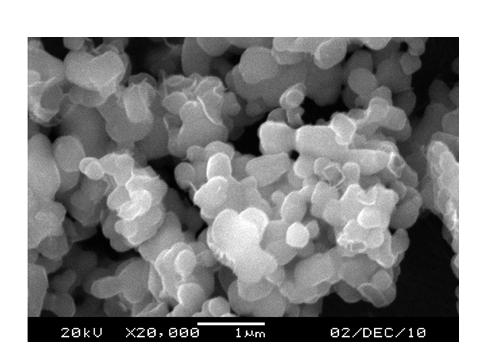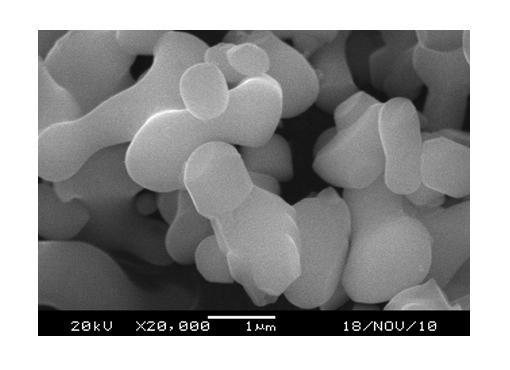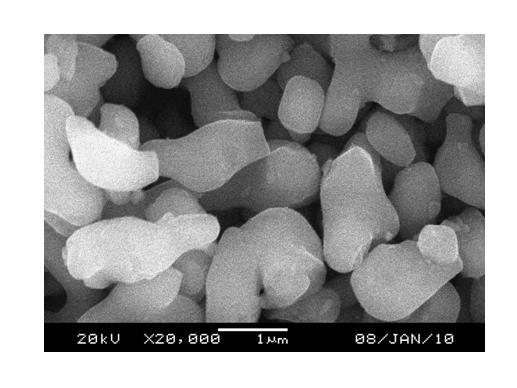Preparation method of nano-grade-carbon-clad spinel lithium titanate battery cathode material
A lithium titanate and battery negative electrode technology is applied in the field of preparation of nano-carbon-coated spinel lithium titanate battery negative electrode materials, which can solve the problems that hinder the full contact between the titanium source and the lithium source, the heterophasic multi-materials, and the different particle sizes. Uniformity and other issues, to achieve the effect of improving market application prospects, uniform particle morphology, and high specific capacity
- Summary
- Abstract
- Description
- Claims
- Application Information
AI Technical Summary
Problems solved by technology
Method used
Image
Examples
preparation example Construction
[0046] The invention provides a method for preparing a negative electrode material of a nano-carbon-coated spinel lithium titanate battery, comprising the following steps:
[0047] The first step: first put titanium dioxide and lithium source into the dispersant, then mix them evenly by stirring, and then dry;
[0048] Step 2: pre-calcine the dried mixture at a temperature of 400-800°C for 2-36 hours in the first atmosphere, and then naturally cool to room temperature (the room temperature is, for example, 15-25°C) to obtain an intermediate product ;
[0049] The third step: Put the obtained intermediate product and carbon source into the dispersant, then mix them evenly by stirring, and then dry;
[0050] Step 4: The mixture of the dried intermediate product, carbon source and dispersant is baked for 2-36 hours at a temperature of 700-950°C in a second atmosphere, and then naturally cooled to room temperature (the room temperature For example, 15~25℃), and finally obtain na...
Embodiment 1
[0074] Embodiment 1: First weigh particle size D 50 300nm, specific surface area BET 100m 2 1000g of titanium dioxide per gram, then placed in a ball mill jar together with 380g of lithium carbonate and 2000g of ethanol, and ball milled on a planetary ball mill at a speed of 400rpm (rev / min) for 8 hours, then taken out and dried. Place the dried mixture in a crucible, put it into a muffle furnace, raise the temperature to 750°C for pre-baking, keep it warm for 6 hours, and then naturally cool to room temperature to obtain intermediate product A.
[0075] Weigh 1000g of intermediate product A, 165g of glucose and 1750g of ethanol, place them in a ball mill jar, mill them on a planetary ball mill at a speed of 400rpm for 4 hours, then take them out and dry them. Put the dried mixture in a crucible, put it into an atmosphere furnace, heat up to 800°C under the protection of nitrogen for secondary baking, keep it warm for 6 hours, and cool it down to room temperature natura...
Embodiment 2
[0076] Embodiment 2: First weigh particle size D 50 50nm, specific surface area BET 200m 2 / g of titanium dioxide 1000g, then placed in a ball mill jar with 380g lithium carbonate and 2000g ethanol, ball milled with a speed of 400rpm on a planetary ball mill for 8 hours, then took it out and dried it. Place the dried mixture in a crucible, then put the crucible into a muffle furnace, raise the temperature to 700° C., keep it warm for 4 hours, and then naturally cool down to room temperature to obtain intermediate product B.
[0077] Weigh 1000g of intermediate product B, 165g of glucose and 1750g of ethanol, place them in a ball mill jar, mill them on a planetary ball mill at a speed of 400rpm for 4 hours, then take them out and dry them. Place the dried mixture in a crucible, then put it into an atmosphere furnace, raise the temperature to 750°C under the protection of nitrogen, keep it warm for 10 hours, and cool it naturally to room temperature to finally get nano-carbo...
PUM
| Property | Measurement | Unit |
|---|---|---|
| Particle size | aaaaa | aaaaa |
| Specific surface area | aaaaa | aaaaa |
| Particle size | aaaaa | aaaaa |
Abstract
Description
Claims
Application Information
 Login to view more
Login to view more - R&D Engineer
- R&D Manager
- IP Professional
- Industry Leading Data Capabilities
- Powerful AI technology
- Patent DNA Extraction
Browse by: Latest US Patents, China's latest patents, Technical Efficacy Thesaurus, Application Domain, Technology Topic.
© 2024 PatSnap. All rights reserved.Legal|Privacy policy|Modern Slavery Act Transparency Statement|Sitemap



